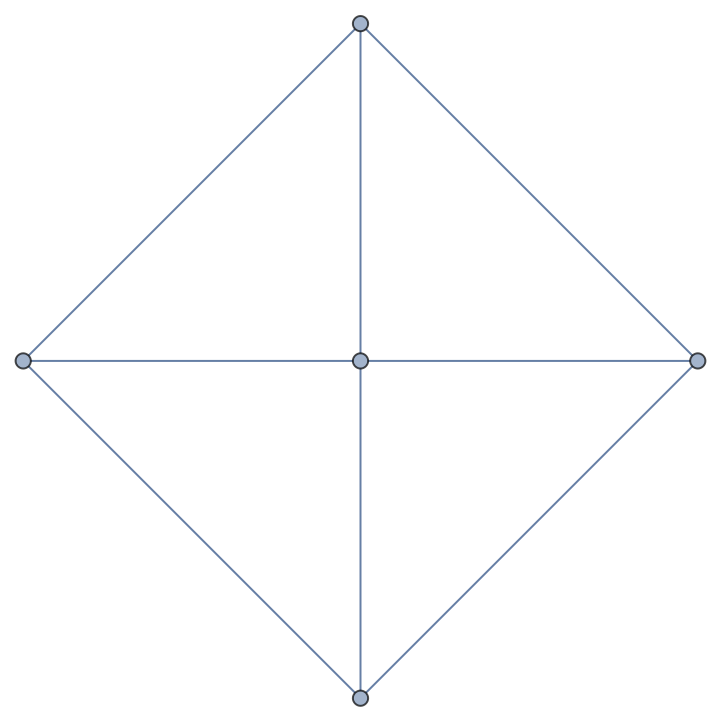Wolfram Function Repository
Instant-use add-on functions for the Wolfram Language
Function Repository Resource:
Compute a group induced by a permutation group on k-subsets
ResourceFunction["SubsetGroup"][g,s] returns the group induced by a group g of n-permutations acting on the set s of k-subsets of {1,…n}. | |
ResourceFunction["SubsetGroup"][g,s,type] treats s as a set of k-subsets or k-tuples, depending on type. |
The permutation group induced on the set of all 2-subsets of {1,2,3} by the cyclic group C3:
| In[1]:= |
| Out[1]= |
| In[2]:= |
| Out[2]= |
The permutation group induced on the set of all 2-subsets of {1,2,3,4} by the cyclic group C4:
| In[3]:= |
| Out[3]= |
| In[4]:= |
| Out[4]= |
Specify the group as a permutation List:
| In[5]:= |
| Out[5]= |
Or an abstract group:
| In[6]:= |
| Out[6]= |
The permutation group induced on the set of ordered 2-subsets by C4:
| In[7]:= |
| Out[7]= |
| In[8]:= |
| Out[8]= |
Permutation group on the edges of the 5-vertex wheel graph:
| In[9]:= |
| Out[9]= |  |
| In[10]:= |
| Out[10]= |
The number of colorings of 4-node simple graphs using at most n colors (OEIS A063842):
| In[11]:= | ![res = Module[{s, ei}, Table[Total[
Table[CycleIndexPolynomial[
ResourceFunction["SubsetGroup"][
GraphData[{4, k}, "AutomorphismGroup"], ei = GraphData[{4, k}, "EdgeIndices"]], Array[s, Length[ei]], Length[ei]], {k, 1, 11}]] /. Table[s[i] -> n, {i, 1, 4}], {n, 0, 31}]]](https://www.wolframcloud.com/obj/resourcesystem/images/61d/61d6cc81-b2f9-4500-860d-f772a04c9840/1f42444e56c62675.png) |
| Out[11]= |  |
Count the number of distinct dice as orbit representatives of a permutation group induced by a group of symmetries acting on a set of faces of a cube:
| In[12]:= |
| In[13]:= |  |
| In[14]:= |
| In[15]:= |
| Out[15]= |  |
| In[16]:= |
| Out[16]= |
n 2-subsets of {1,2,3,4,5,6} yield a permutation group of n-permutations:
| In[17]:= |
| Out[17]= |
| In[18]:= |
| Out[18]= |  |
| In[19]:= |
| Out[19]= |  |
The n ordered 2-subsets of {1,2,3,4,5,6} yield a permutation group of n-permutations:
| In[20]:= |
| Out[20]= |
| In[21]:= |
| Out[21]= |  |
| In[22]:= |
| Out[22]= |
This work is licensed under a Creative Commons Attribution 4.0 International License